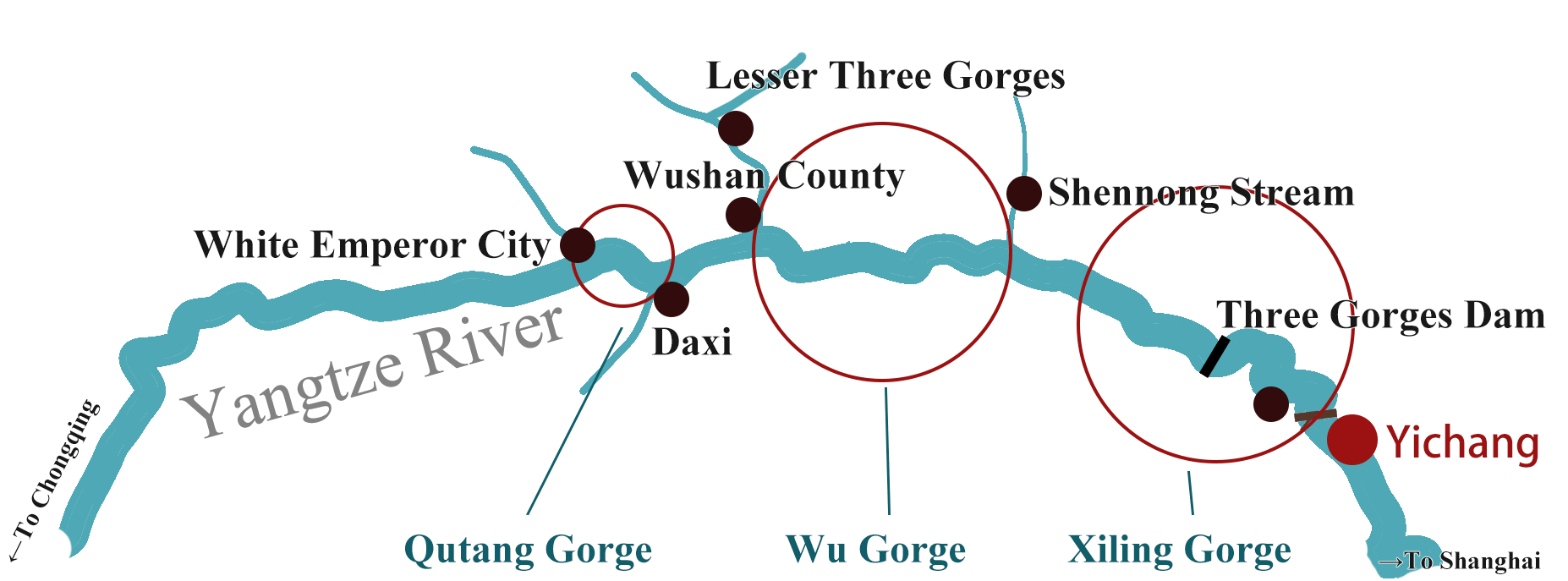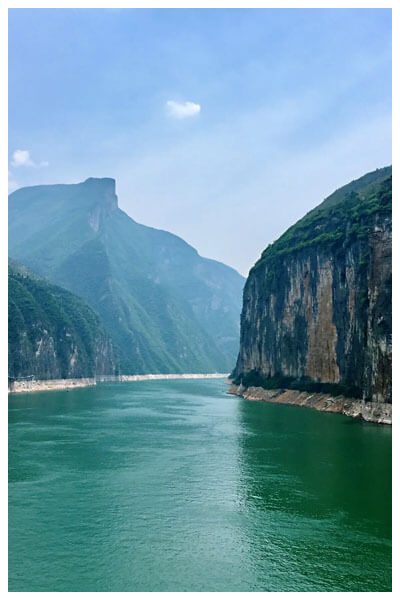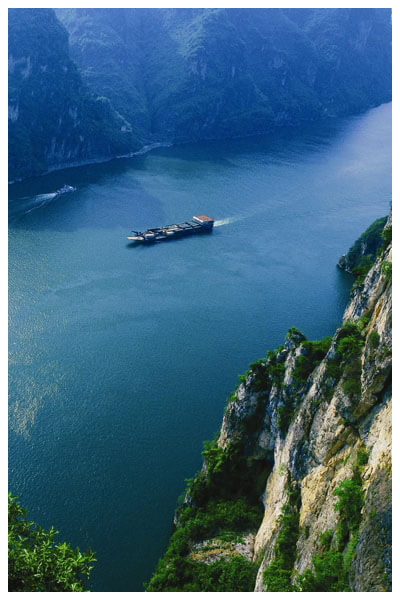+86-717-6251390, 6233066bookings@slothtrip.com, contact@yangtze.com
Login
Sign UpLoginSign Up
The Three Gorges of the Yangtze River is one of the most outstanding masterpieces in nature. It starts from the Fengjie County in Chongqing in the west and ends at Yichang City, Hubei Province in the east. The Three Gorges includes Qutang Gorge, Wu Gorge and Xiling Gorge ranging from west to east.

| Gorge | Length | Range |
|---|---|---|
| Qutang Gorge | 8km / 5 miles | from White Emperor City of Fengjie County to Daxi of Wushan County |
| Wu Gorge | 45km / 28 miles | from Daning River of Wushan County to Guandukou of Badong County |
| Xiling Gorge | 76km / 49 miles | from Xiangxikou of Zigui County to Nanjin Pass of Yichang |

Qutang Gorge is the shortest (only about 8 kilometers) and narrowest (only 100 meters) of the Three Gorges, but it is most majestic and steep. It enwinds from the White Emperor City in Fengjie County to the Daxi Town in Wushan County. It is famous for dramatic waters and towering cliffs, and it is palpable that this is where the currents of history and the breath-taking power of nature meet.
The widest point measures only 500 feet (about 150 meters) wide. The mountains on either side reach as high as 4,000 feet (about 1,200 meters). These narrow gorges among high mountains with several switchbacks creates spectacular scenery.
Immediately downstream of the White Emperor City in Fengjie County, the Yangtze River flows between the Baiyan Mountain (literally White Salt Mountain) on the south and Chijia Mountain (literally Red Armor Mountain) on the north. The point where the river flows between these mountains is called the Kui Gate, also known as Kui Pass. It serves as an entrance to the Gorge – the first of the Three Gorges. Because of the Kui Gate, the Qutang Gorge is also known as the Kui Gorge.

Wu Gorge is the second gorge of the Three Gorges. When sailing downstream, after passing Wushan County, you will enter the 28 miles (about 45 kilometers) Wu Gorge. As the most elegant gorge among the Three Gorges, it starts from Daning River of Wushan County, and ends at Guandukou of Badong County.
Characterized by majestic peaks crowned by lush forests, Wu Gorge is said to be celestial. This section of Three Gorges is famous for its elegant beauty and grotesque peaks.
The highlights of the Wu Gourge are the mysterious twelve peaks in Wushan Mountain. Legend has it that Yao Ji (Wushan Goddess) loved this area so much, so she and her 11 attendants transformed into the graceful peaks you can see here along the river. Six of them situate on the north bank, and the other six are on the south bank of the Yangtze River. Among them, the Goddess Peak (Shen’nv Peak) is the most beautiful one, which looks like a slim girl from a distance. The Wu Gorge in rainy days is even more beautiful, with clouds floating between mountains and peaks, and it is like a Chinese painting.

Xiling Gorge is the longest section of the Three Gorges, about 49 miles (76 kilometers). It starts from Xiangxi Kou of Zigui County in the west, and ends at Nanjing Pass in Yichang city. It is also famous for its spectacular scenery.
This area is named after the Xiling Mountain in Yichang. This Gorge is actully a series of small gorges, and their names originated from different ancient legends. It includes Bing Shu Bao Jian Gorge (Military Manual and the Precious Sword Gorge), Micang Gorge, Niu Gan Ma Fei Gorge (Ox’s Liver and Horse’s Lung Gorge), Huangniu Gorge ((Yellow Ox Gorge)), Mingyue Gorge (Bright Moon Gorge), Dengying Gorge (Lantern Shadow Gorge), Yellow Cat gorge, etc.
The Three Gorges Dam divided Xiling Gorge into the western and eastern sections. Part of the western section above Maoping County has been submerged under water. The eastern section keeps the original scenery of the old Three Gorges, which is particularly precious.